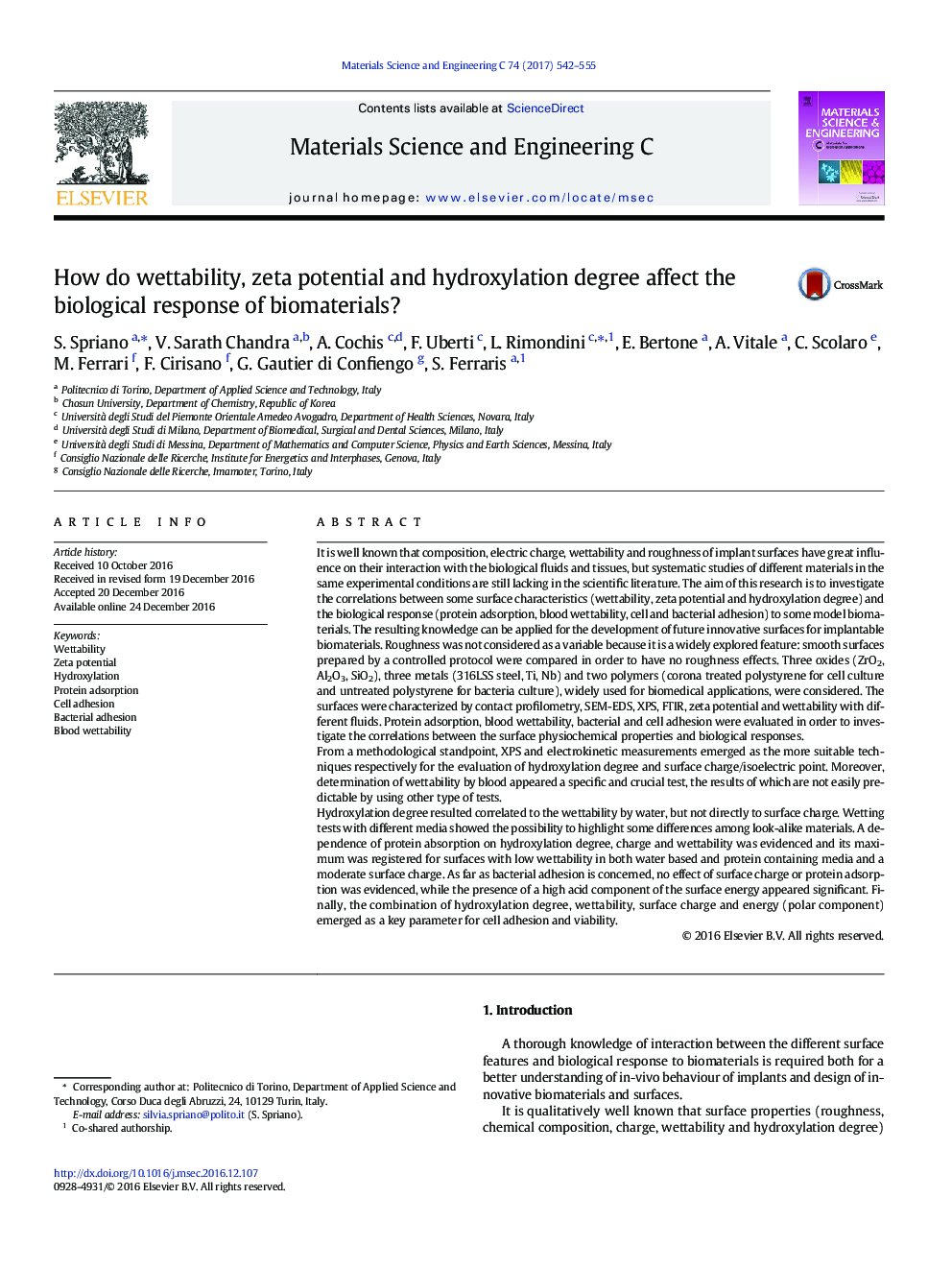| کد مقاله | کد نشریه | سال انتشار | مقاله انگلیسی | نسخه تمام متن |
|---|---|---|---|---|
| 5435056 | 1509147 | 2017 | 14 صفحه PDF | دانلود رایگان |
- Correlations between surface properties and biological response to model biomaterials.
- Wetting tests with different media highlight differences among look-alike materials.
- Protein absorption is related to hydroxylation degree, charge and wettability.
- Bacterial adhesion is related to high acid component of the surface energy.
- Cell adhesion is related to hydroxylation, wettability, surface charge and energy.
It is well known that composition, electric charge, wettability and roughness of implant surfaces have great influence on their interaction with the biological fluids and tissues, but systematic studies of different materials in the same experimental conditions are still lacking in the scientific literature. The aim of this research is to investigate the correlations between some surface characteristics (wettability, zeta potential and hydroxylation degree) and the biological response (protein adsorption, blood wettability, cell and bacterial adhesion) to some model biomaterials. The resulting knowledge can be applied for the development of future innovative surfaces for implantable biomaterials. Roughness was not considered as a variable because it is a widely explored feature: smooth surfaces prepared by a controlled protocol were compared in order to have no roughness effects. Three oxides (ZrO2, Al2O3, SiO2), three metals (316LSS steel, Ti, Nb) and two polymers (corona treated polystyrene for cell culture and untreated polystyrene for bacteria culture), widely used for biomedical applications, were considered. The surfaces were characterized by contact profilometry, SEM-EDS, XPS, FTIR, zeta potential and wettability with different fluids. Protein adsorption, blood wettability, bacterial and cell adhesion were evaluated in order to investigate the correlations between the surface physiochemical properties and biological responses.From a methodological standpoint, XPS and electrokinetic measurements emerged as the more suitable techniques respectively for the evaluation of hydroxylation degree and surface charge/isoelectric point. Moreover, determination of wettability by blood appeared a specific and crucial test, the results of which are not easily predictable by using other type of tests.Hydroxylation degree resulted correlated to the wettability by water, but not directly to surface charge. Wetting tests with different media showed the possibility to highlight some differences among look-alike materials. A dependence of protein absorption on hydroxylation degree, charge and wettability was evidenced and its maximum was registered for surfaces with low wettability in both water based and protein containing media and a moderate surface charge. As far as bacterial adhesion is concerned, no effect of surface charge or protein adsorption was evidenced, while the presence of a high acid component of the surface energy appeared significant. Finally, the combination of hydroxylation degree, wettability, surface charge and energy (polar component) emerged as a key parameter for cell adhesion and viability.
189
Journal: Materials Science and Engineering: C - Volume 74, 1 May 2017, Pages 542-555
